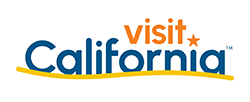Live Life in Full Bloom in Northern California's Tuolumne County
Feb. 7, 2020, Sonora, CA- Spring is blooming throughout the rolling hills of Gold Country, the meadows of Yosemite National Park, and the peaks of the High Sierra. Warmer weather melts the snow, making for amazing waterfalls. Flowers start to bloom on mountainsides and in vast meadows, painting the landscape with vibrant shades of yellow, blue, purple, and orange. The days are extended with lasting sunshine that gives adventurers more time to explore the great outdoors. Spend the longer days exploring Tuolumne County, just 2.5 hours from the San Francisco Bay Area.
Yosemite National Park- Over half of Yosemite National Park is in Tuolumne County and it's the less crowded half. Hetch Hetchy is an off the beaten path, hidden gem in Yosemite National Park. Once known as the twin to the famous valley floor, it is now home to a reservoir that serves as San Francisco's drinking water. Hetch Hetchy is a mecca for wildflowers and wildlife that line the trail to Wapama Falls. Hug a tree and marvel at some of the oldest trees in the world at the Tuolumne Grove of Giant Sequoias. With a short 2-mile round trip hike, visitors will be surrounded by nearly two dozen sequoia trees. Spring wouldn't be complete without a frolic and Tuolumne Meadows is perfect for frolicking, rock climbing, and sightseeing. One of the largest high elevation meadows in the Sierra Nevada, Tuolumne Meadows, usually opens in late spring. Spring starts the kick-off to whitewater rafting and what better place to raft than the famous Tuolumne River. With runs starting at the base of Yosemite National Park, outfitters offer trips for beginners and seasoned rafters alike.
Gold Country- Take a trip back in time to and celebrate Columbia State Historic Park's 75th anniversary. The park has free admission and is open year-round with a working blacksmith, gold panning, stagecoach rides, an old-time photo parlor, and suds-serving saloons, but one of the most authentic experiences is the Columbia Diggins' 1852. Happening every May, with a small admission price, visitors can wander through the gold diggins' encampment and feel the true Historic experience. Spring into Historic Downtown Sonora, and re-fresh with a tea for the ailments and an ionic foot soak at Amala Detox and Tea Lounge. Spring welcomes the seasonal Sonora Farmers Market with farm-fresh goods, flowers, and products from local merchants. Jamestown offers wildflower lovers the chance to see the blooming Mother Lode. Wildflower train rides at Railtown 1897 State Historic Park run during the month of April and take riders through the rolling foothills with an Interpretive Park Ranger. Soak in the fresh spring air with a wildflower hike through the Red Hills. With serpentine-based soils, the area provides a unique collection of plant species that put on a colorful display every spring. Table Mountain a local's favorite to hike amongst the wildflowers and for those feeling a little more daring, rock climbing is an alternative to hiking.
High Sierra- Sprawling meadows, crystal clear lakes, deep canyons, and unique mountain formations make up Tuolumne County's High Sierra. The quaint mountain town of Twain Harte is buzzing during spring with small cafes, mountain eateries, and even a classic miniature golf course. Twain Harte is nestled in the Stanislaus National Forest. Explore the vast beauty of the forest and catch some sights of wildflowers and waterfalls on one of these accessible trails: the Pinecrest Lake Loop, the Sugar Pine Railway Trail, or the Westside Railroad Trail. As the snow melts in the High Sierra, the wildflowers put on a show all the way into summer, catch the bloom in the higher regions by way of horseback. Outfitters Kennedy Meadows and Aspen Meadows will lead informative horseback rides into the sprawling colorful backcountry meadows. Trip packages are available from hour rides to day rides, and even all-inclusive multi-day trips.
About Tuolumne County, California
Tuolumne County rhymes with “Follow Me,” located 133 miles/200 km east of San Francisco, is a pristine, scenic expanse reaching into the foothills of the Sierra Nevada Mountains. Gold was discovered in Tuolumne County in 1848, setting off the major gold rush of 1849. The main highways leading to the picturesque drive from the San Francisco and East Bay Area are Highways 108 and 120 from the west and Highway 49 from the north. The State Highway 120 entrance to Yosemite National Park is considered the “front door” of the park for the San Francisco Greater Bay Area. The Stanislaus National Forest, Yosemite National Park, and other surrounding areas provide natural vistas and settings for hiking, water skiing, horseback riding, rafting, camping, snowmobiling, boating, snow skiing, fishing, and other outdoor activities. Seven restored historic hotels, four golf courses, numerous and varied dining establishments, historic saloons, four wineries, and hard cider distillery, train rides, casinos, seven museums, two state historic parks, two live theaters, many bed-and-breakfast inns, and a variety of Airbnb accommodations are among the many other attributes that make the county a year-round vacation destination. www.visittuolumne.com
# # # #
Contact: Katie Kirkland, Communications and Tourism Manager, katie@gotuolumne.com, 209-533-4420












